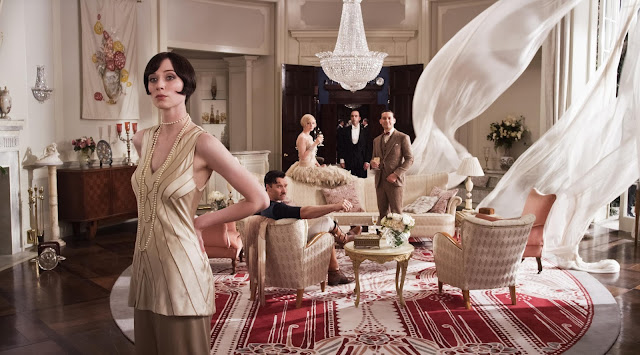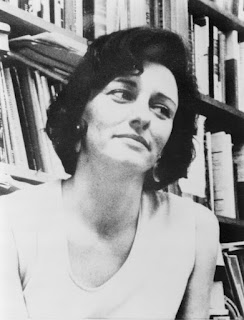The Great Gatsby: Introduction
*please note all of these notes come from the Penguin Classics version
Gatsby as Trimalchio
- The introduction starts by stating the the original title for 'The Great Gtabsy' was 'Trimalchio in West Egg'.
- It then goes on to compare Gatsby to a man named Trimalchio from the novel 'Satyricon' written by Petronius, a roman courtier who wrote many novels regarding this man.
- Trimalchio shares many similarities to Gatsby, the most recognisable of which is his ability to build a new life that embodies an alternate facade for people to view and enjoy. However, it also explains how both Gatbsy and Trimalchio have the want for time to reverse or to stop; and this can be highlighted by the signiface of when Gatsby quickly catches the falling clock at Nick's house in Chapter 5, when meeting Daisy for the first time in years.
- Also, of course we know that Gatsby comes to orientate his life around the green light at the end of Daisy's dock and it becomes a symbol of completion, fragility and longing. A similar assets is present when Trimalchio is first introduced in 'Satyricon'. He is throwing the green ball up and down and he will no longer touch the ball if it lands on the ground. Both of these objects embody each of their obsession and how they come to overtake the characters later on.
East vs West
- The two eggs, 'East Egg' and 'West Egg' are a somewhat mystery throughout the novel.
- While it does become clear that they do represent completely different things and different social ideals.
- The embody two different type of people of which are both presented in the novel.
- This intro seems to say that Tom and Daisy are, of course, linked with the East Egg and so it comes to represent Old Money and the materialistic qualities that these people hold. Things come instantly to these people and this can all be mirrored in the American Dream originally founded by Benjamin Franklin.
-Alternatively, West Egg seems to represent more modern ideals and of course New Money, which obviously means that Gatsby is linked to this half. The text says that people on West Egg search for 'something more, which materialism can never satisfy'. This, of course, demonstrates a clear divide between the two however also presents an alternative interpretation, opposing the view that West Eggers are merely wanting want the East Eggers have.
Other works by Fitzgerald comparable to Gatsby
'Winter Dreams'
- This a novel written by Fitzgerald in 1922 with a very similar story line and protagonist to 'The Great Gatsby'.
- Gatsby shows very linkage to the main character Dexter Green, a man of humble beginnings with a sudden need to be a part of a world he has never known.
- Like Gatsby (and Trimalchio) he builds a life of fantasy and this hinders him from having a relation with Judy Jones (Daisy)
- As in Gatsby, Dexter idolises Judy Jones and associates her with 'beauty', 'romance' and 'ecstasy'.
- It seems clear to me that Dexter, alike Gatsby somewhat, is unhappy. As once his dreams 'brighten' they soon 'dim'. Once they have 'dimmed and the world seems definitively deglamorized, then emotionally the only future that matters really is the past'.
'Absolution'
- This novel, also by Fitzgerald and published in 1963, was originally intended to illustrate Jay Gatsby's early life.
- He rebels and defies his biological father and trues to build another life of of wonder that embodies his dreams.
- However, the only difference between this novel and the other two previously discussed is that the message which becomes clear at the end of The Great Gatsby is mentioned during 'Absolution'. Farther Schwartz gives his own advice that warns Rudolph Saremington (young Gatsby) that 'getting too close might be dangerous, ruinous to the visions of earthly delight'. Here he says that these dreams Rudolph sees may be better to be observed that trey lived as they can cause issues and hindrance.
- This links very obviously to The Great Gatsby due to the tragic ending.
Nick in The Great Gatsby
- Although we may view Gatsby as the protagonist of the novel, Nick is equally as important as the events we hear/read about are seen and written from Nick's point of view.
- 'Nick certainly amplifies and interprets'
- It makes it clear that it is highly possible that Nick's memory may fade and he will have to reinterpret situations and therefore manipulate the outcomes.
- It is unclear as to whether the events accounted are at all true and/or manipulated.
- He often describes situations using phrases such as 'I suppose', ' I think' and ' possibly', this suggest his unreliability.
- Nick's obsession is also a strong factor that makes him able to manipulate situations as he has a 'tendency...to identify with Gatsby as well as to make him a hero'.
- 'Nick invest everything in Gatsby'.
- It also mentions how Nick often quickly transcends from being 'enchanted' to being 'disgusted' - this may show how he misses out the more mundane feelings and events adding to the sense of mystery of the novel.
- There seem to be a sense of obsession for Nick to perfect the events and insure not to leave parts 'blank' - this adds to his unreliability of a narrator.
- Andre Le Not once described Yellow as being 'wheat, sunshine and fertility but also whisky, gold and dead, combustible straw' -it then got son to explain how yellow can have the outward appliance of prosperity and 'gorgeousness' it can 'tun combustible, violet and too hot'.
- In addition to this he describes Blue as being ' water, the sky, twilight, cool, restful and inviting.'
- Gatsby's car is yellow, which could be argued to be confusing. However, although the radar is aware of its colour throughout it is descried as also 'light green' and 'cream-coloured', this shows how the car, like Gatsby appears differently in different lights/situations.
- To add to this, Doctor T. J. Eckleburg's eyes are described as a 'dimmed blue' and this can be argued to represent the already fading Flapper 20's culture. However, in stark contrast to this, the glasses (surrounding the eyes) represent the still very much present and growing materialism. This is, of course, made even more prominent when it is remembered that these eyes were designed to also embody God, in the novel.
- There are many links to yellow throughout the novel but mainly when in reference to Gatsby and this highlights the downside to the seemingly bright and outwardly glamorous facade of the American Dream.
- 'Nick certainly amplifies and interprets'
- It makes it clear that it is highly possible that Nick's memory may fade and he will have to reinterpret situations and therefore manipulate the outcomes.
- It is unclear as to whether the events accounted are at all true and/or manipulated.
- He often describes situations using phrases such as 'I suppose', ' I think' and ' possibly', this suggest his unreliability.
- Nick's obsession is also a strong factor that makes him able to manipulate situations as he has a 'tendency...to identify with Gatsby as well as to make him a hero'.
- 'Nick invest everything in Gatsby'.
- It also mentions how Nick often quickly transcends from being 'enchanted' to being 'disgusted' - this may show how he misses out the more mundane feelings and events adding to the sense of mystery of the novel.
- There seem to be a sense of obsession for Nick to perfect the events and insure not to leave parts 'blank' - this adds to his unreliability of a narrator.
Blue and Yellow significance
- Both blue and yellow are equally significant in the book and should work together 'harmoniously' to provide balance.- Andre Le Not once described Yellow as being 'wheat, sunshine and fertility but also whisky, gold and dead, combustible straw' -it then got son to explain how yellow can have the outward appliance of prosperity and 'gorgeousness' it can 'tun combustible, violet and too hot'.
- In addition to this he describes Blue as being ' water, the sky, twilight, cool, restful and inviting.'
- Gatsby's car is yellow, which could be argued to be confusing. However, although the radar is aware of its colour throughout it is descried as also 'light green' and 'cream-coloured', this shows how the car, like Gatsby appears differently in different lights/situations.
- To add to this, Doctor T. J. Eckleburg's eyes are described as a 'dimmed blue' and this can be argued to represent the already fading Flapper 20's culture. However, in stark contrast to this, the glasses (surrounding the eyes) represent the still very much present and growing materialism. This is, of course, made even more prominent when it is remembered that these eyes were designed to also embody God, in the novel.
- There are many links to yellow throughout the novel but mainly when in reference to Gatsby and this highlights the downside to the seemingly bright and outwardly glamorous facade of the American Dream.



Comments
Post a Comment